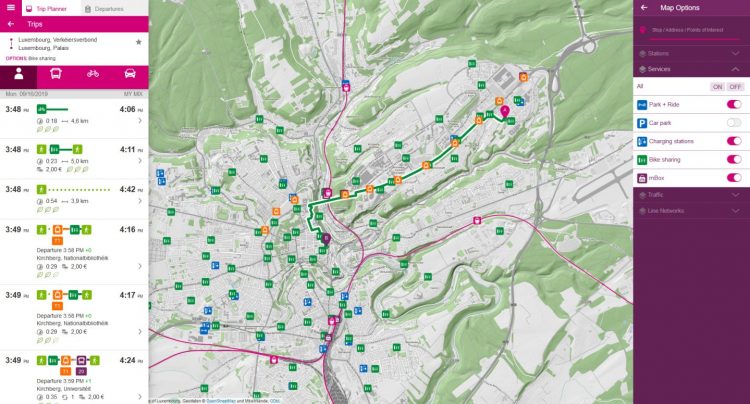Driving success in MaaS: questions answered part one
- Like
- Digg
- Del
- Tumblr
- VKontakte
- Buffer
- Love This
- Odnoklassniki
- Meneame
- Blogger
- Amazon
- Yahoo Mail
- Gmail
- AOL
- Newsvine
- HackerNews
- Evernote
- MySpace
- Mail.ru
- Viadeo
- Line
- Comments
- Yummly
- SMS
- Viber
- Telegram
- Subscribe
- Skype
- Facebook Messenger
- Kakao
- LiveJournal
- Yammer
- Edgar
- Fintel
- Mix
- Instapaper
- Copy Link
Posted: 8 June 2020 | Siemens Mobility | No comments yet
In a recent webinar hosted by Intelligent Transport in association with HaCon and Siemens Mobility, the predominant factors that make MaaS valuable for both users and operators were explored. Here, webinar speaker Robert Bichsel, Product Owner for MaaS solutions at Siemens, answers some of the webinar audience questions.


How do you communicate with passengers in the era of the virus?
The focus in terms of customer communication has shifted substantially with the emergence of the coronavirus. We have compiled a set of dedicated solutions that can be used to communicate with passengers during the pandemic. You can find them here: https://www.hacon.de/en/solutions/covid-19-solutions-for-the-transport-industry/
How do you stimulate adoption rate and make a MaaS platform a success?
Aspects that help in this respect include:
- MaaS platforms should be aligned with the local mobility landscape and the policies that go along with it. E.g. for the MaaS platform in Luxemburg that we built, the goal was to reduce inner-city traffic jams. Our MaaS platform therefore offers Park&Ride (P&R) routes, taking into account private cars, such that citizens in rural areas leave their cars at P&R parkings and take the train into the city. To further incentivise such behaviour, Luxemburg chose to make public transport free for all riders


- Since public transport moves the biggest amount of people by far, it should also be at the centre of MaaS solutions. Otherwise, there is the risk that MaaS only addresses a small share of the potential customers
- Entry barriers for customers need to be low. This includes simplifying the signup process, especially when multiple mobility providers come together on the same solution (e.g. provide one central account to access all means of mobility)
- MaaS solutions should be built on top of existing infrastructure. If there is already a broadly used smart card or an existing user account in place, MaaS platforms should integrate with this existing infrastructure boost the adoption rate.
This webinar is still available – watch this webinar to hear from Siemens Mobility and HaCon as they discussed the predominant factors that make MaaS valuable for both users and operators.
To watch this webinar on-demand, register here.
What do you see for the future of B2B MaaS?
The B2B MaaS market bears a huge potential with many innovative new use cases and corresponding business models.
For one, we see more and more interest coming from companies aiming to provide better mobility services to their employees. These can be corporate travel applications for international door-to-door travel that also allow to compare flight and train connections taking into account all transfers and all modes of mobility involved, for example.
It can also be local solutions providing mobility for the daily commute or between multiple sites of the same company. Why should a company pay for a company car, a depreciating asset, when it can provide a more flexible and cheaper mobility budget to their employees? We see a big benefit in such models for both the company and the employee, and therefore a really interesting market.
For another, we envision solutions that are more closely intertwined with consumer goods business. While nowadays shopping malls may reimburse a parking ticket if the price of the purchased goods exceed a certain value, in the future they may reimburse the intermodal journey home. Bigger purchases may even entitle you for a direct taxi ride home, or at least the delivery of the purchased goods. Digitalising more and more aspects of the mobility landscape, as well as of other aspects of life, will produce additional B2B MaaS business models that are not yet on anybody’s radar. We are excited about what the future may bring.
Biography


Robert holds a BSc in Mechanical Engineering (EPFL, Lausanne and NUS, Singapore) and an MSc in Robotics, Systems and Control (ETH, Zurich).
Related topics
Intelligent Transport Systems (ITS), Mobility Services, Multimodality, Transport Governance & Policy, Travel & Passenger Information
Related organisations
Hacon A Siemens Company, Siemens Mobility
Related people
Robert Bichsel







